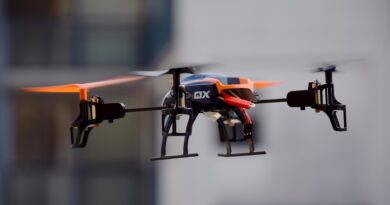Advancements in Automotive Safety Technology
In an era marked by rapid technological evolution, the automotive industry stands at the forefront of innovation, particularly in the realm of safety. Advancements in automotive safety technology have not only revolutionized the driving experience but also significantly reduced the number of accidents and fatalities on the roads. This article delves into the cutting-edge developments that are reshaping the landscape of automotive safety, highlighting how these technologies contribute to creating a safer driving environment for all.
1. Collision Avoidance Systems
One of the groundbreaking innovations in automotive safety technology is the development of collision avoidance systems. These systems leverage sensors, cameras, and radar to monitor the vehicle’s surroundings continuously. Advanced algorithms analyze the gathered data in real-time, enabling the vehicle to detect potential collisions with other vehicles, pedestrians, or obstacles. If an imminent collision is detected, the system can automatically intervene by applying the brakes or steering to avoid or mitigate the impact.
Collision avoidance systems have proven to be highly effective in preventing accidents caused by distracted driving or unexpected obstacles. By providing an additional layer of awareness and responsiveness, these systems play a crucial role in reducing rear-end collisions, side-impact crashes, and other types of accidents.
2. Autonomous Emergency Braking (AEB)
Autonomous Emergency Braking (AEB) is a key component of collision avoidance systems, designed to further enhance vehicle safety. AEB systems use sensors to monitor the distance and relative speed between the vehicle and objects in its path. If the system determines that a collision is imminent and the driver does not take corrective action, it can automatically apply the brakes to prevent or mitigate the impact.
The integration of AEB in modern vehicles has demonstrated a significant reduction in rear-end collisions. As this technology continues to evolve, it holds the potential to become a standard feature in all vehicles, contributing to a substantial decrease in accidents caused by human error.
3. Advanced Driver Assistance Systems (ADAS)
Advanced Driver Assistance Systems (ADAS) encompass a diverse range of technologies designed to assist drivers in various aspects of vehicle operation. These systems leverage sensors, cameras, and connectivity to provide real-time feedback and support to the driver. Key features of ADAS include lane departure warning, adaptive cruise control, and traffic sign recognition.
Lane departure warning systems alert the driver if the vehicle unintentionally drifts out of its lane, helping to prevent accidents caused by driver fatigue or distraction. Adaptive cruise control adjusts the vehicle’s speed to maintain a safe following distance, enhancing both safety and convenience. Traffic sign recognition systems use cameras to identify and display relevant road signs, ensuring that drivers stay informed about speed limits and other important information.
4. Vehicle-to-Everything (V2X) Communication
The evolution of connected car technology has paved the way for Vehicle-to-Everything (V2X) communication systems. These systems enable vehicles to communicate with each other and with infrastructure elements such as traffic lights and road signs. By sharing critical information about their speed, direction, and potential hazards, vehicles equipped with V2X technology can anticipate and react to potential dangers more effectively.
V2X communication has the potential to revolutionize road safety by reducing the likelihood of collisions at intersections, providing real-time traffic updates, and improving overall situational awareness. As more vehicles adopt V2X technology, the collective intelligence of the connected network enhances the safety of every individual on the road.
5. Pedestrian Detection and Protection
The integration of pedestrian detection and protection systems represents a significant leap forward in automotive safety technology. Using a combination of cameras and sensors, these systems can identify pedestrians in or near the vehicle’s path. In the event of an imminent collision, the system can activate features such as automatic emergency braking or deploy external airbags to reduce the severity of injuries.
Pedestrian detection and protection technologies are particularly crucial in urban environments where interactions between vehicles and pedestrians are frequent. By prioritizing pedestrian safety, these systems contribute to a reduction in pedestrian-related accidents, a significant step toward creating safer streets.
6. Cash for Used Cars Sydney: Aligning Safety with Sustainability
While discussing advancements in automotive safety technology, it’s essential to acknowledge the role of sustainable practices in the automotive industry. The integration of safety features often extends to the entire lifecycle of a vehicle, including the responsible disposal of used cars. In Sydney, an emerging trend that aligns safety with sustainability is the concept of cash for used cars Sydney (damaged unwanted car).
“Cash for used cars Sydney” refers to a service where individuals can sell their used cars for cash. This not only provides an opportunity for owners to upgrade to newer, safer vehicles but also ensures that older cars, which may lack the latest safety features, are responsibly retired from the road. By encouraging the recycling and proper disposal of used cars, this initiative contributes to overall road safety by reducing the presence of older vehicles with outdated safety technologies.
7. Driver Monitoring Systems
As the automotive industry progresses, ensuring the safety of not only the vehicle occupants but also other road users remains a top priority. Driver monitoring systems have emerged as a vital technology to address issues related to driver attention and fatigue. These systems use cameras and sensors to track the driver’s behavior, monitoring factors such as eye movement, head position, and steering patterns.
If signs of drowsiness or distraction are detected, driver monitoring systems can issue alerts to regain the driver’s attention or, in some advanced systems, intervene by initiating semi-autonomous driving modes. By addressing the human factor in road safety, these systems contribute to reducing accidents caused by driver fatigue and inattention.
Conclusion
The continuous evolution of automotive safety technology is reshaping the landscape of road safety, ushering in an era where accidents are not just mitigated but, in many cases, prevented altogether. Collision avoidance systems, AEB, ADAS, V2X communication, pedestrian detection, and driver monitoring systems collectively contribute to creating a safer driving environment. As technology advances, it is crucial to embrace not only the innovations that enhance safety on the road but also initiatives such as Sydney scrap car yard, which promote the responsible retirement of older vehicles.
In the pursuit of safer roads, the integration of these technologies into modern vehicles marks a significant step forward. The synergy between cutting-edge safety features and sustainable practices ensures that the benefits of automotive innovation extend beyond individual vehicles to the collective well-being of all road users. As we look to the future, the trajectory of automotive safety technology promises a road ahead that is not only technologically advanced but inherently safer for everyone.


